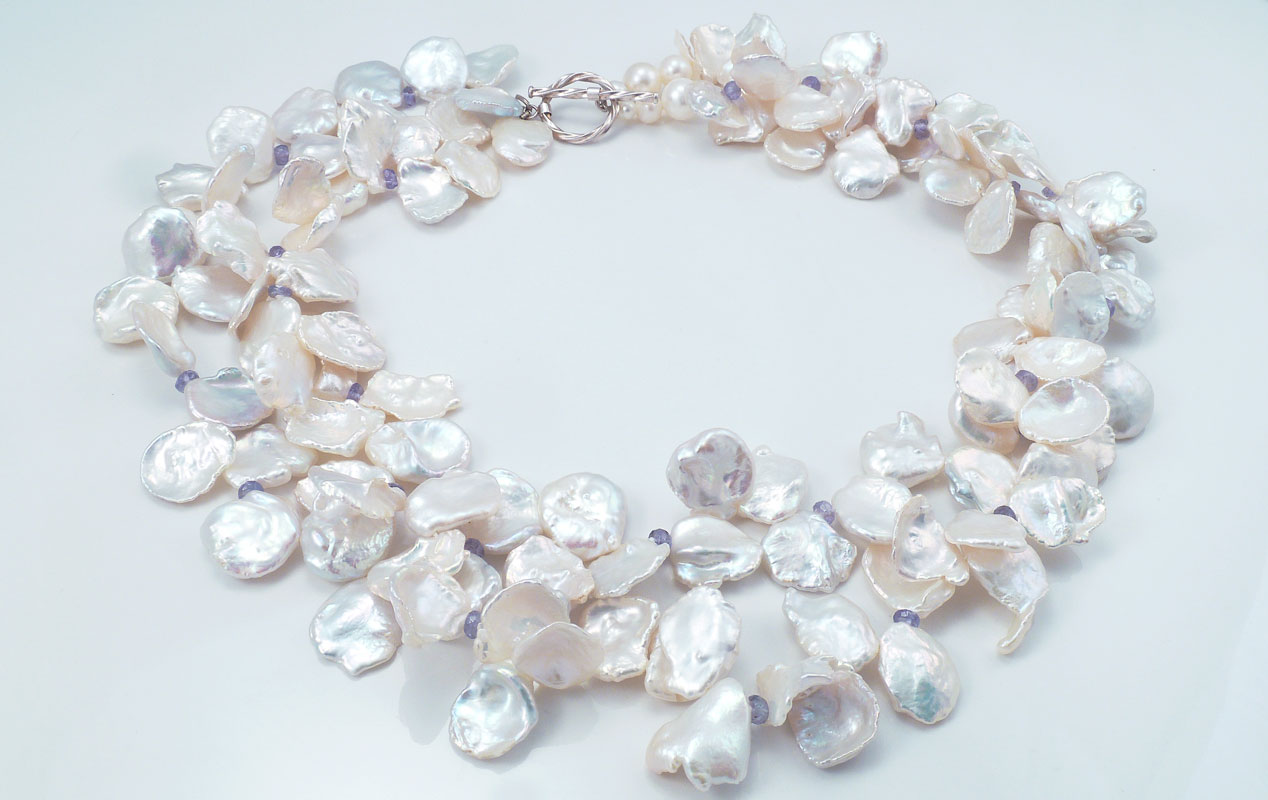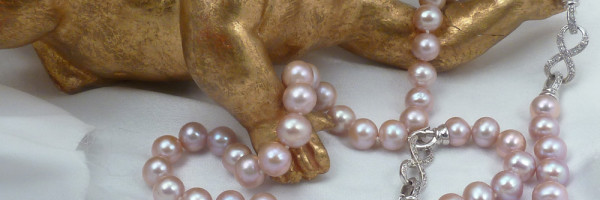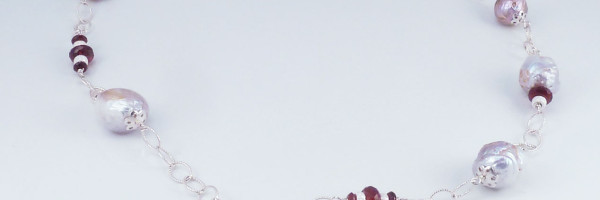
What are keshi pearls? “Keshi” means “a poppy seed” in Japanese. The word is used to describe something really small. Initially, the word was used by the Japanese pearl farmers to describe very small pearls. Those pearls were less than 2 mm. Japanese pearl farmers found them in an oyster that was nucleated in order to get a cultured pearl. Keshi pearls are a kind of a by-product in the Akoya oysters while the culturing process. Sometimes, we call them “chance pearls”. This alludes to their origin. Indeed, they appear a result of an accident.
It is easy to understand why, at the beginning, the Japanese pearl farmers were unhappy to find keshi pearls in an oyster. Their goal was to grow a nice round Akoya pearl. However, in the course of time, people start appreciating the unique and peculiar beauty of these pearls. Often, they are found in the saltwater Akoya oysters.
Why keshi pearls are so appealing. People enjoy their amazing, very high luster. Often the pearls display an orient that makes them so appealing. These pearls don’t have a bead. Actually, they are composed of 100% nacre. As a rule, these pearls have irregular baroque shape. By the way, round keshi pearls are extremely rare. Japanese keshi pearls are usually very small.
How keshi pearls are formed
What are keshi pearls? What triggers it formation? We may offer a scenario. In the process of culturing the saltwater pearls, a nucleus may be rejected by a mollusk. However, the mantle tissue that is inserted along with the nucleus, remains in the mollusk. As a result, it starts producing nacre. This nacre will not cover the bead nucleus. As a matter of fact, there is no nucleus. But the nacre still will be secreted and accumulated. Eventually, very unusual and beautiful pearls will appear. And they are composed of pure nacre.
Or, some mantle tissue implanted with the nucleus may be detached. Then, another pearl sac is formed. It will start secreting nacre on its own. At the same time, the nacre is formed around the nucleus in the other pearl sac. Or, nacre may be secreted around a microorganism that has intruded into the mollusk during the nucleation process.
Some time ago, the South Sea and Tahitian keshi pearls have come to the jewelry market. These pearls are even more appealing and popular than Japanese. They are are much larger. They may have size starting from 8-10 mm up to 20 mm. Today, pearl jewelry designers enjoy working with these pearl. Because the latter display an amazing luster and iridescence. Moreover, they have interesting baroque shapes. Using such pearls, they create astounding contemporary pearl jewelry.
Culturing
Let’s speak about the so-called cultured freshwater keshi pearls. To date, they are abundant in market having become one of the favorites due do their fantastic colors, luster, iridescence… As we have stated in the beginning of the article, various reasons may cause their growth. Being a by-product, they may grow in a mussel along with “normal” pearls.
Some experts claim that these pearls should be qualified as natural pearls. Because they consist of pure nacre. Moreover, they result from an accident. However, they result in the process of pearls culturing. Thus, they are cultured pearls. These pearls may be saltwater and freshwater. This should be understood and always disclosed. Actually, the price will be depend on whether these pearls are saltwater or freshwater. As it always happens in jewelry, a provenance is one of the factors determining the value.
For year, gemologists discuss what is keshi pearls. Still, there is still no unanimity on how to qualify cultured freshwater “keshi pearls”. Sometimes these pearls are called “keshi-type pearls”. We are not going to get into these arguments. For the purpose of this website, we are going to specify the provenance of this type of pearls. We will call these pearls “cultured freshwater keshi pearls”.



